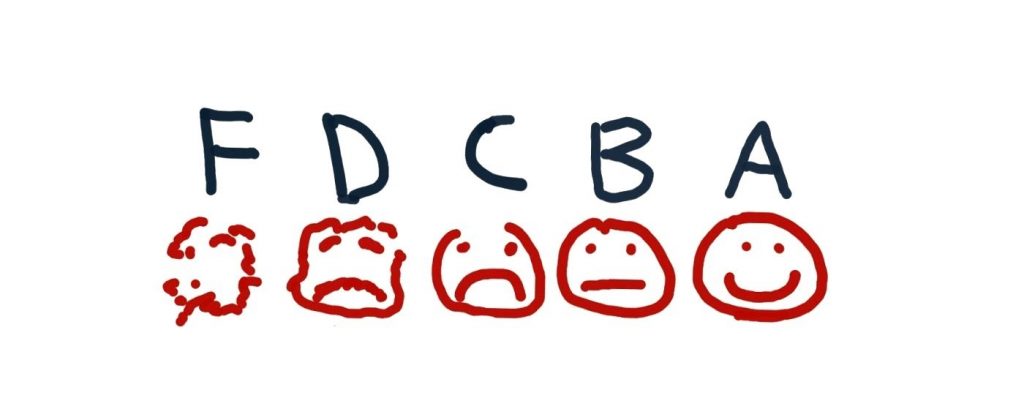S4 Enrichment class : about school life in EEB1 (2)
Students not impressed by club choices
A closer look at limited school club options at EEB1
The European School of Brussels 1 (EEB1) is certainly a large school, boasting an impressive student population of around 4,000. However, for a learning institution with many free rooms and outdoor sports fields, the number of school clubs available for students inside or outside school hours is somewhat underwhelming.

In fact, a survey (700 students, 10 teachers) undertaken by the student council shows that 78% of participants agree that there should be more clubs available for anyone willing to partake in them. It also shows that 52% of students would enjoy some sort of sports club, while even uninterested respondents said that the football pitch, ping-pong tables and basketball court could be utilised better (64% of students shared this viewpoint). “I think that it would be much more engaging if we had more clubs,” said an anonymous survey participant. “I would love to learn more about my interests and meet other people who share them.”
Even looking at the posters around campus shows that there are not many clubs for enthusiastic students to choose from, or that they aren’t being actively advertised. The Rainbow Group (for LGBTQ+ students) and the Manga Club (for students wanting to learn drawing in a manga style) are some of the only examples of student/teacher led clubs.
Considering this limited selection, the school should encourage students and/or teachers to organise clubs if they have any good ideas or are otherwise interested in expanding the learning experience of students at EEB1.
Mina Skrt
Want to play some pool? Not anymore
The pool table has been closed for about 8 months now. So, most teenagersare asking themselves this simple question: “Why?”
We are now in the last month of this 2022-23 School Year and since the start of October, the pool table has been closed. This means that no one can play it or borrow cue sticks or balls. The pool table was a good and important way of having fun during free period or lunch time for a lot of S4s and S5s.

The question that now comes is “Why is the pool table closed?” It all started on some day at the end of September at lunch. A group of friends decided to play some pool but in “their way” of playing the game. They played it horribly and proceeded to launch pool balls at each other’s and hit their friend with the cue sticks. The cafeteria staff saw them playing this way and guess what happened the next day: they closed it for an undetermined period. This can be seen as a form of injustice because a couple of people ruined the pool table for all the fun and calm players. No one knows if this pool table will ever be open for play again but we cannot do anything about it. Have a wonderful day!
Louison Dumas-Delage S4FRA
On the lookout for a place to sit…
European school number one in Brussels is praised by many. It provides a great education, and support system for its students. However, everything has its flaws.

We journalists conducted an interview with some of the school’s S4-S7 students. We asked them what they don’t like and would want to fix in the school. One of the topics raised was lack of places to spend time during breaks. We decided to dive deeper into this problem.
For S4-S7 students, the seating available is the school cafeteria and the library. There is of course also the canteen, but it is only open to them at the lunch break. Other than that, the only place where they are allowed to spend time inside school is an outside yard. However, during harsh weather it is not such a great option.
Students in possession of a green card can go out of the school during a cancelled lesson or lunch. But this is not the case for those who have red and yellow cards. They must stay inside school walls. Yet often they find themselves with no place to sit down and eat or talk with their friends. This is the effect of overcrowding in the cafeteria, or library.
EEB1 pupils are not happy with this and will appeal to the school student council to find a solution to this problem.
Helena Kogut
The Power of Grades

Grades are an inescapable part of school life, a way of measuring whether or not students are learning according to the expectations of the system. Grades matter because they can determine a student’s options for the future. Yet not all students look at them the same way. Some refuse to take their grades too seriously or let the weight of schoolwork get in the way of living life and having fun. Others allow grades to dictate their self-worth and let that one letter or number in red ink on a piece of paper define their happiness. Academic validation rules above all else. Where does the pressure come from? Parents, teachers, friends and other students, themselves, or all of the above? And at the end of the day, does it really matter?

If high school is about learning, and preparing students for life ahead, part of that preparation should be teaching students how to
cope with the expectations placed upon them. Too much stress can be paralyzing, but maybe a little can motivate students to push themselves. In the same way, good grades can be an incentive for students to work hard and—ideally—a reward for those who do. A bad grade should not be seen as the end of the world, or a reason to stop trying. Perhaps the most important lesson schools should teach is that there is no success without failure. And that grades only define us if we let them.
Eva Kangaslahti




